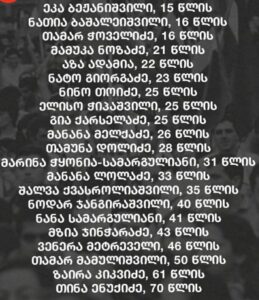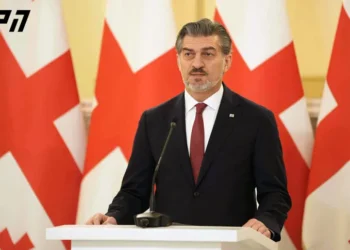April 9, 2025, marks the 36th anniversary of the tragic events that unfolded in Tbilisi in 1989, forever known as the April 9 Tragedy or Tbilisi Massacre. On that day, a peaceful anti-Soviet demonstration on central Rustaveli Avenue was violently dispersed by the Soviet Army. The crackdown resulted in the deaths of 21 people and left hundreds more injured. The brutal attack shook the nation and became a defining moment in Georgia’s struggle for independence.
The Soviet forces used toxic gas to break up the crowd, leaving many protesters poisoned, and many others suffering from severe injuries. The violent suppression of the demonstration was seen not only as an attack on the people of Georgia but also as a symbol of the Soviet Union’s refusal to allow democratic change within its territories.
In the aftermath, Tbilisi and the rest of Georgia went into mourning. On April 10, 1989, a nationwide strike was called in protest against the Soviet violence. The people of Georgia laid thousands of flowers at the scene of the massacre to honor the fallen victims and to show their defiance. A 40-day period of national mourning was declared, reflecting the deep sense of loss and solidarity that resonated throughout the country.

The events of April 9, 1989, were a turning point in Georgia’s history, leading to further developments that would eventually culminate in the country’s independence from the Soviet Union. A year later, on April 9, 1990, Georgia declared its Declaration of Independence, setting in motion a series of events that would shape the nation’s future.
On the second anniversary of the tragedy, April 9, 1991, Georgia took a monumental step by declaring its sovereignty and independence from the Soviet Union, following the results of a nationwide referendum.
One of the leaders of the 1989 protests, Zviad Gamsakhurdia, would later become Georgia’s first democratically elected President.
This year’s anniversary comes at a time of ongoing political unrest in Georgia. Yesterday, protests were once again held across Tbilisi, with citizens taking to the streets to demand greater political freedoms and reforms. As part of the demonstrations, people laid tulips at the April 9 memorial in front of the parliament building in Tbilisi—symbolizing both remembrance for the fallen of the April 9 Tragedy and their ongoing fight for democratic values. The tulips, often associated with peace and resistance, have become an emblem of Georgia’s resilience, echoing the spirit of the 1989 protests.
In the face of contemporary challenges, the legacy of the April 9 Tragedy remains a powerful reminder of Georgia’s long-standing struggle for independence and democracy. The tragic events of that day continue to shape the country’s political landscape, as the fight for a free and democratic Georgia persists, fueled by the memory of those who gave their lives for the future of the nation.














